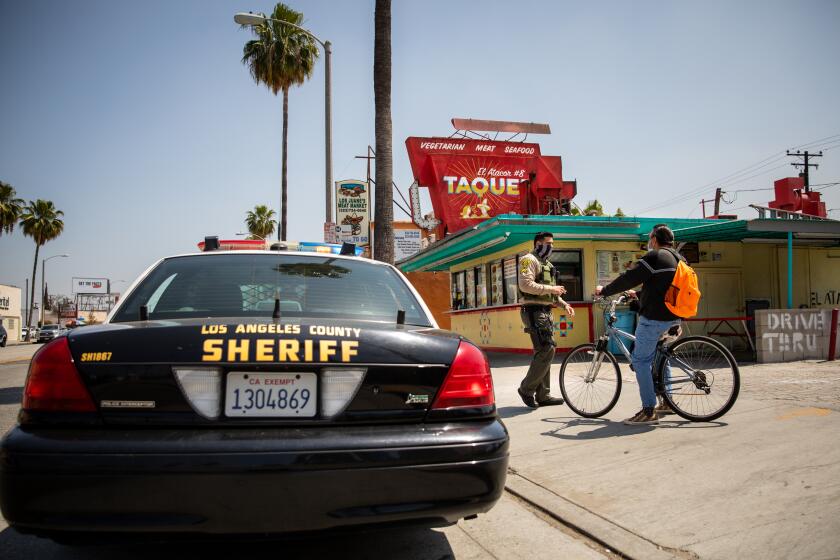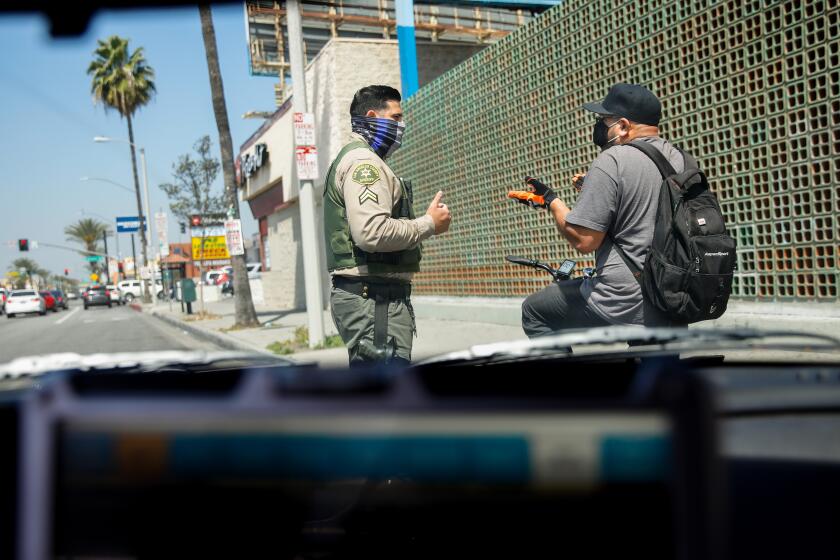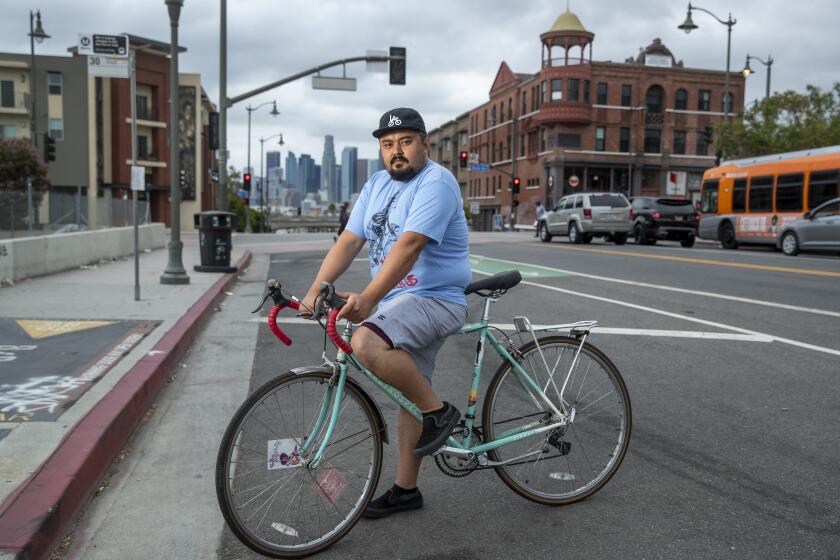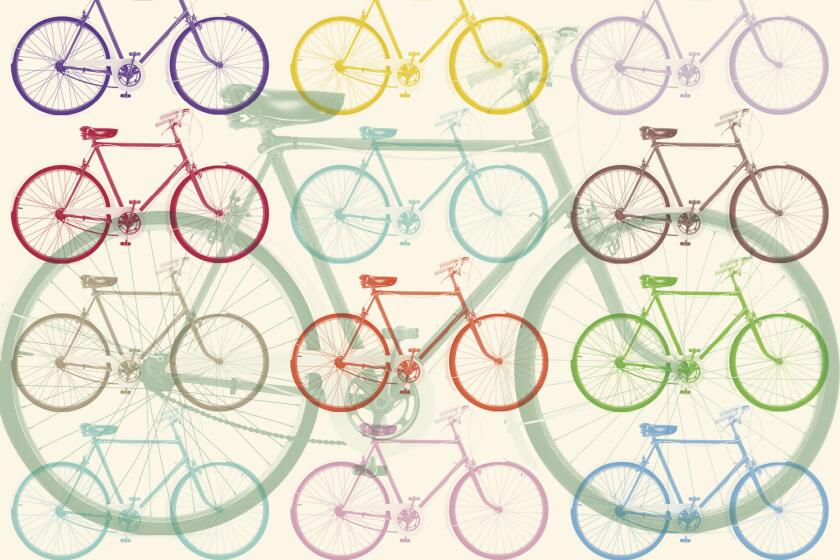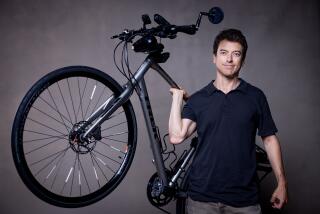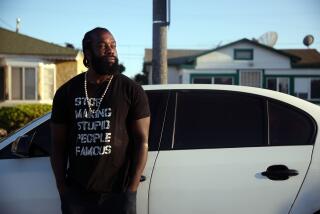L.A. County sheriff’s watchdogs say inspector general should review bike stops
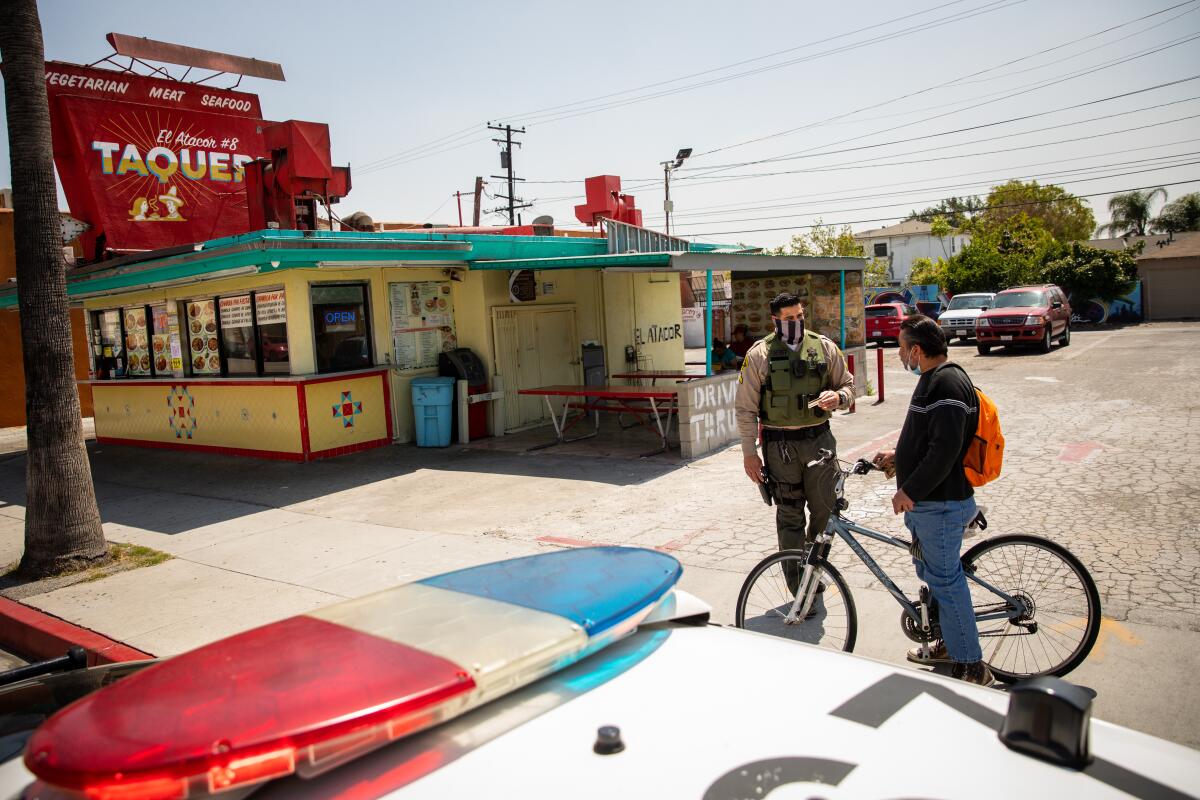
- Share via
Members of a civilian panel that oversees the Los Angeles County Sheriff’s Department called on the county’s independent watchdog to examine stops of bicyclists after a Times investigation found that deputies search the vast majority of bike riders they pull over and disproportionately stop Latino people.
The Times analyzed more than 44,000 bike stops logged by the Sheriff’s Department since 2017 and found that deputies search 85% of riders they pull over and that 7 of every 10 stops involve Latino cyclists. Riders in poorer communities with large nonwhite populations are stopped and searched far more often than those in more affluent, whiter parts of the county.
The analysis found that deputies discover illegal items in 8% of searches. Weapons were seized 164 times — less than half a percent of all searches.
Priscilla Ocen, chair of the Sheriff Civilian Oversight Commission, said the department’s inspector general, Max Huntsman, should review “racial disparities of traffic stops, including bike stops,” and that the commission should consider limiting the agency’s role in traffic enforcement.
“This does not have, in terms of what it’s yielding, any real benefit in terms of safety,” Ocen said, referring to low rates of success deputies have in finding drugs or other contraband while searching bicyclists.
Sheriff’s officials have defended the use of bike stops as a legitimate tool to fight crime, arguing that criminals use bikes to evade detection.
Riding a bike allows criminals “to traverse a neighborhood unnoticed, faster and safer than on foot, and additionally makes it easier to avoid police contact. We are not conducting traffic stops of persons obviously engaged in the use of a bicycle for exercise or amusement,” department spokeswoman Lt. Lorena Rodriguez said in September.
The Sheriff’s Department is not obligated to follow the recommendations of the commission, which serves in an advisory role.
Lael Rubin, also a member of the commission, said the deputies’ practice of routinely escalating minor bike infractions into more serious encounters in which they search people’s belongings and often detain them in the back seat of a patrol car could be violating bicyclists’ civil rights.
“That’s not constitutional policing,” she said.
The Times filed a public records request for information about bike stops that Los Angeles County sheriff’s deputies made from 2017 through the end of July.
It’s unclear what, if anything, Huntsman will do to examine bike stops. The commission could direct him to conduct an audit or something less formal.
The Times’ findings, Huntsman said, were similar to the problems with the agency’s Domestic Highway Enforcement Team, which pulled over motorists on the 5 Freeway in search of drugs, and was suspended in 2018 after a Times investigation found Latino motorists were disproportionately targeted.
“One of the problems with low success rates is that the lower the percentage of successful catching of a criminal, obviously the higher the percentage of people who weren’t a criminal,” Huntsman said. “When that percentage gets really high … what you’re doing is perceived as harassment by the community.”
Two L.A. County supervisors, Janice Hahn and Hilda Solis, said the board should reconsider a local law in the county’s unincorporated areas that makes it illegal to cycle on sidewalks — a violation that was the basis of 8% of the Sheriff’s Department’s bike stops, according to the Times analysis.
The vast majority of bike stops don’t end with bloodshed or bullhorns. They happen routinely, largely out of the public eye.
“If the deputies are using this minor infraction of riding on the sidewalk as a pretense to search innocent people, that is wrong,” Hahn said in a statement. “The law against riding on sidewalks was meant to protect pedestrians, but if this is how it is being enforced, I think we need to consider changing it.”
Cyclists told The Times they ride on the sidewalk because it is safer than contending with cars on busy roads without bike lanes.
Deputies stopped people for riding on the sidewalk more frequently in areas with few bike lanes, The Times found. In East L.A., for example, where just 1% of streets have bike lanes, nearly a quarter of bike stops were for sidewalk violations, one of the highest rates in the sheriff’s jurisdiction. And in Lynwood, where there are no bike lanes at all, they account for 16% of stops.
By contrast, West Hollywood, which is mostly white, has a higher percentage of streets with bike lanes. The city’s code allows bikers to ride on the sidewalk in areas with no bike lanes, and less than 1% of bike stops there were initiated because of sidewalk violations.
Surveys conducted by the nonprofit Los Angeles County Bicycle Coalition found riders are twice as likely to ride on the sidewalk on streets with no bike lanes than those with them.
Michael Schneider, founder of the transportation advocacy group Streets for All, said the average rider doesn’t know when he is crossing over from a city where riding on the sidewalk is allowed into an unincorporated county area.
An analysis of more than 44,000 bike stops logged by the Los Angeles Sheriff’s Department since 2017 found that 7 of every 10 stops involved Latino cyclists.
For example, it’s legal in the city of Los Angeles, as long as the rider doesn’t show “willful and wanton disregard” for safety.
“That mismatch is really problematic,” he said.
Schneider said his group is pushing the Board of Supervisors to legalize riding on the sidewalk.
Solis said the county’s Vision Zero Plan, an initiative to eliminate traffic-related deaths, also proposes the change.
“This proposal is low-hanging fruit that will begin addressing the injustices exposed by the Los Angeles Times’ analysis,” Solis said. “Biking to work, to run errands, or to school should not be a crime. Instead, residents should have the privilege to use their bicycle without fear of profiling.”
Kevin Shin, deputy director of the bicycle coalition, supports such efforts but called it a “Band-Aid solution,” saying the county should invest in making streets safer for bicyclists.
“Unless we’re actually also making strong efforts to advance real changes in infrastructure, riding on the sidewalk really doesn’t fix the issue,” he said.
He said bringing more bike lanes to underserved communities is part of the group’s long-term goals.
Supervisor Holly Mitchell said reports that Latino bicyclists are disproportionately stopped are “not acceptable.”
“No resident should suffer from discrimination based on where they live or the color of their skin. Creating more safe options including bike lanes for cyclists must be part of traffic safety,” Mitchell said.
More to Read
Sign up for Essential California
The most important California stories and recommendations in your inbox every morning.
You may occasionally receive promotional content from the Los Angeles Times.
